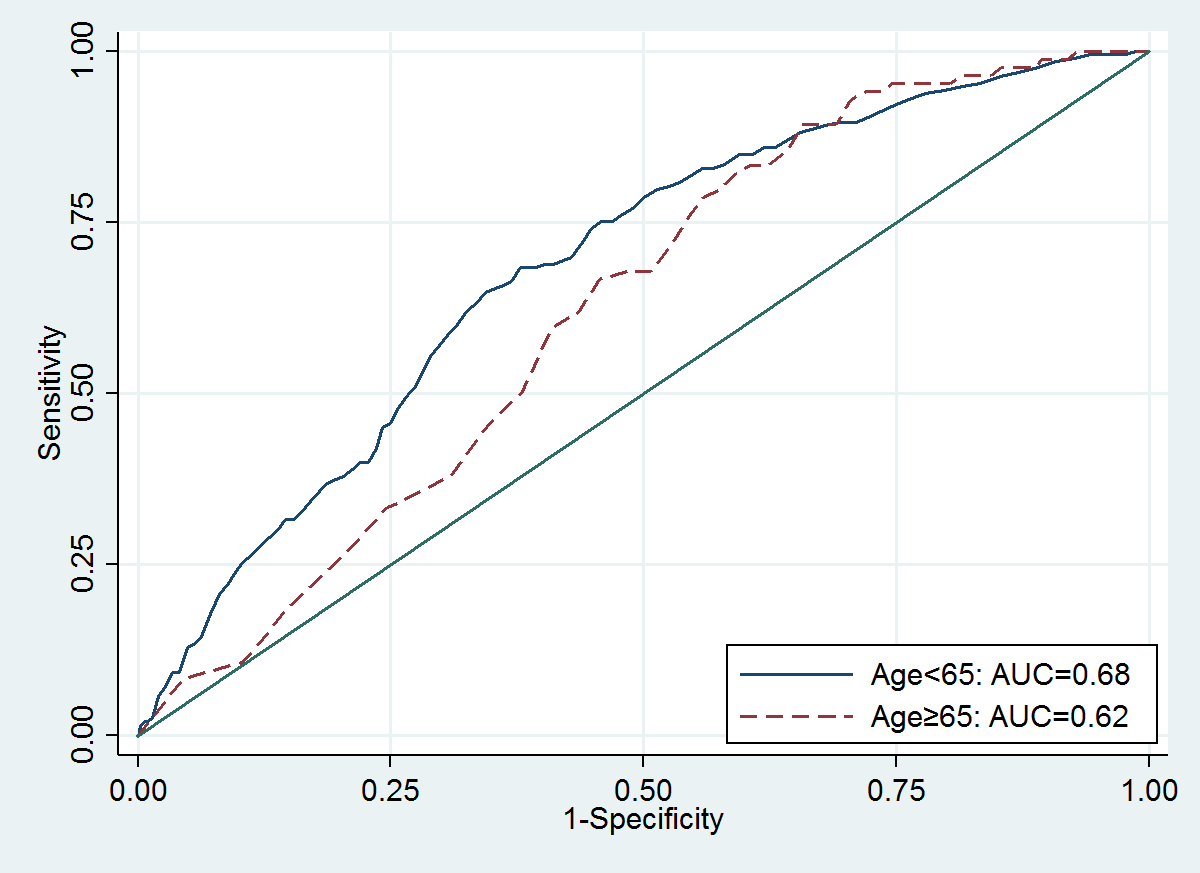EPTS Is a Poor Predictor of Post-KT Mortality for Older Recipients.
Johns Hopkins, Baltimore, MD
Meeting: 2017 American Transplant Congress
Abstract number: 318
Keywords: Age factors, Allocation, Kidney transplantation
Session Information
Session Name: Concurrent Session: Disparities in Organ Transplantation
Session Type: Concurrent Session
Date: Monday, May 1, 2017
Session Time: 4:30pm-6:00pm
 Presentation Time: 4:42pm-4:54pm
Presentation Time: 4:42pm-4:54pm
Location: E353C
Background:The new kidney allocation system (KAS) is meant to better match longevity of recipients and allografts. The United Network for Organ Sharing (UNOS) decided that longevity matching would be based on a simple model that includes chronologic age, diabetes status, time on dialysis, and prior transplant and was termed the Estimated Post-Transplant Survival (EPTS). However, the risk factors for post-kidney transplant (KT) mortality may differ in their predictive ability for older and younger KT recipients. Therefore, we tested the predictive ability of EPTS in older and younger KT recipients.
Methods: We studied 99,672 first time, KT recipients using SRTR data (1/1/06-12/31/15). We estimated survival by EPTS score using Cox proportional hazards model. We calculated Harrell's c-statistic for older (age≥65) and younger (18<age<65) KT recipients and calculated a boot-strap p-value using 100 iterations. Additionally, we estimated the area under the receiver operating curve (AUC) for 1 year mortality and plotted the receiver operating curves by recipient age.
Results: There were 79,645 younger KT recipients and 20,027 older KT recipients between 2006 and 2015. The c-statistic of EPTS for older KT recipients was 0.59, which is much lower than the c-statistic of 0.67 for younger KT recipients (P<0.02). Similarly, the AUC for 1 year mortality is lower (0.62 vs. 0.68) for older KT recipients (Figure).
Conclusions: The EPTS fails to identify suitable older KT candidates and performs only slightly better than by chance. By relying on chronologic age, not physiologic age, robust older candidates may be highly disadvantaged in prioritization for KT.
CITATION INFORMATION: McAdams DeMarco M, Luo X, Massie A, Segev D. EPTS Is a Poor Predictor of Post-KT Mortality for Older Recipients. Am J Transplant. 2017;17 (suppl 3).
To cite this abstract in AMA style:
DeMarco MMcAdams, Luo X, Massie A, Segev D. EPTS Is a Poor Predictor of Post-KT Mortality for Older Recipients. [abstract]. Am J Transplant. 2017; 17 (suppl 3). https://atcmeetingabstracts.com/abstract/epts-is-a-poor-predictor-of-post-kt-mortality-for-older-recipients/. Accessed December 25, 2025.« Back to 2017 American Transplant Congress
